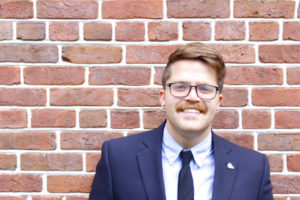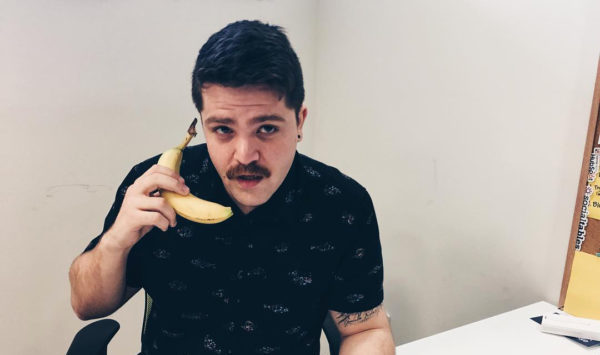The American Institute of Architecture Students (AIAS) is celebrating the 60th anniversary of student excellence in leadership, service, and design. In honor of our 60th year, the AIAS is excited to share 60th: Legacy, an ongoing weekly celebration of and thanks to our alumni sponsored by Professional Publications, Inc (PPI). PPI is a publisher of professional licensing exam materials since 1975 and wants to recognize those who have helped the AIAS achieve 60 years of success.

Name
Joel Pominville, Assoc. AIA
Organization
AIA New Orleans
Title
Executive Director
Connect
Twitter | Instagram | LinkedIn
Bio
Joel is the Executive Director of AIA New Orleans and the New Orleans Architecture Foundation (NOAF), the organization focused on enhancing public appreciation of architecture and design as vital community assets that enrich the quality of life in New Orleans. In this role, he is responsible for organizational support of Board initiatives, programs and activities related to each organization’s respective mission. Before moving to New Orleans, Joel served as National Vice President of the AIAS in Washington, DC. He also served as Student Director on the Board of the Association of Collegiate Schools of Architecture (ACSA), AIAS Representative on the National Council of Architectural Registration Boards’ (NCARB) Internship Advisory Committee, AIAS Liaison on the AIA National Associates Committee and Student Team Member on two Substantial Equivalency visits for the National Architectural Accrediting Board (NAAB) in Bahrain and Cyprus. A designer, leader and advocate, Joel places community and people at the core of his work. Throughout his study at Clemson University School of Architecture and College of Business and Behavioral Science, his practice in the field of architecture and his multiple roles within organizational leadership, Joel has developed sensitivity to the importance of the designer’s role in their communities. Over the last six years, he was instrumental in the local and national development of Freedom by Design, AIAS’ community design+build program.
What and/or who shaped you into who you are and what you do today?
Seeing other parts of the world has significantly helped me in my personal and professional growth. I grew up in a military family, which meant we were moving around every 2-3 years. Since I was young, we were exposed to different climates, cultures and people. While in school, and the years since, I have been fortunate to travel around quite a bit in Europe, South America and the Middle East. If the opportunity comes up to travel, and you can do it, take it. I guarantee you will be changed with every new place and new culture you are exposed to.
How can someone best change the world?
When you realize you can’t change the world, but you can have a significant impact on people around you. Actually, when you are in a leadership role, you WILL have an impact on those around you. It’s your choice to make that a positive impact, leaving others with a desire to continue to pass that positivity forward.
How can someone be a better designer?
I want to answer this as “be a better designer/leader”. Keeping an open mind may be the most important attribute I’ve seen in the designers and leaders I look up to. When you look at the work of Renzo Piano, and you hear him speak about his work, he addresses the exact moment/place/energy of every design independently. He doesn’t have a “one size fits all” design approach. Then look at Tim Brown, CEO and President of IDEO. As a leader, Tim Brown leads his company with an open mind, always questioning what they are doing right and what they can be doing better. An open mind allows for iteration. And “iteration is key” said every design professor ever.
What is one tip you would give yourself in your 20s?
Well… I am still in my 20’s, but my advice would be to understand my passions, and then pursue them. I believe that passion is what drives us, especially creative individuals. It’s doesn’t need to be confined to architecture, it could be tinkering, serving people, painting, civic leadership, whatever. When you figure it out, you have to give it an outlet. Some people are able to fold it into their practice, some create side jobs, others get involved in other local organizations or government. I really believe success is when you’re maxing out what you have to offer… and for me, that’s driven by my passions.
How have you overcome unforeseen challenges through your career?
Honestly, the hardest lesson I learned was understanding failure. I used to think failure was when you planned everything out, and it didn’t happen like you thought it would.. or didn’t happen at all. I chose to pursue a social design startup with Nick Tafel and Obi Okolo when I graduated and it didn’t work out like we thought. I thought that was failure. However, that turned out to be one of the most formative experiences in my career so far. Now, I see failure as the decision not to act even when everything else inside you is telling you to make a move. The lack of trying stimulates no personal or professional growth… and where’s the fun in that?
What is a decision or action you made in school that influenced your trajectory?
Getting involved in the AIAS was by far the most important decision I made in school. Now that I am engaged with other leaders in the industry and community, in New Orleans and elsewhere, it is evident that being involved outside of work or schoolwork is a key factor to success in one’s chosen path.
If you, or another AIAS alumni you know, deserves recognition for their contribution to the profession and society at large, please use the link below to nominate them for this honor.











